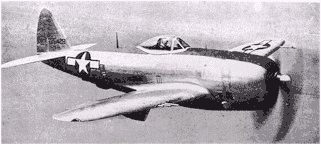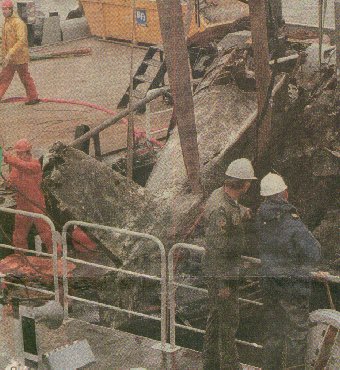the History of Wieringen
The Second Worldwar
An airplane crash
3 november 1943
 Frank D. Gallion, a 24-year old pilot from Ohio, takes of with his Republic P-47D Thunderbolt from an allied airbase in Essex, East-England. Together with 11 other fighterplanes of the 334th squadron he will escort bombers on a daylight raid to Wilhelmshafen. It's early in the morning as they leave. The war has reached a stage where the allies no longer need the darkness of night for their bombingcampaign over Germany. German cities are bombed day and night now. Frank D. Gallion, a 24-year old pilot from Ohio, takes of with his Republic P-47D Thunderbolt from an allied airbase in Essex, East-England. Together with 11 other fighterplanes of the 334th squadron he will escort bombers on a daylight raid to Wilhelmshafen. It's early in the morning as they leave. The war has reached a stage where the allies no longer need the darkness of night for their bombingcampaign over Germany. German cities are bombed day and night now.
However, this doesn't mean the mission is without danger. The Luftwaffe is weakened but not defeated already. The 334th squadron will notice that on this mission. About halfway, over the northernmost part of the Dutch province Noord-Holland the squadron is intercepted by ten Messerschmidts. The Thunderbolt may be a sturdy and fast airplane, it is not invulnerable. Only nine out of the twelve Thunderbolts will return at the base that day. One crashes near Opmeer, another one close to Vatrop on Wieringen and the third plane dives into the IJsselmeer a few kilometres southeast of Den Oever. It is Frank Gallion's plane. He fails to get out of the cockpit and disappears under water with the airplane...
For some time it was not clear what happened tot the motor of the airplane. It wasn't in the wreckage. Searching was not necessary, as eye witnesses of the airbattle could tell that the motor had landed in a field in the Wieringermeer, close to the forest called Robbenoordbos and the IJsselmeerbarrier. The motor was excavated by German troops, hoisted on a cart and removed.
15 February 1993
The IJsselmeer south east of Den Oever. A vessel of the waterauthority, Rijkswaterstaat, collides with an unknown wreck while measuring the depth of a new channel. The wreck lies at approximately 3 metres depth on the lakefloor. A few weeks later navy divers take a look. They take two machineguns, ammunition and some pieces of metal back to the surface. With this can be established that it's a Thunderbolt P-47D lying there, and more in particular Frank Gallion's plane.
Because the wreck is obstructing the shipping in the new channel, it is considered dangerous. Especially when there could be explosives etc. on board. A salvage operation will be necessary.
The county Wieringermeer, where the wreck is located, has no money for this operation and this means the salvage operation is delayed for two years. |
 |
February 1995
The salvage of the P-47 fueled a lot of interest. It's rare that a wreck is conserved so well. In this case it was because it lay under water for the most part.
The first face consisted of divers taking the sand around the airplane away with dredging equipment. In this process the cockpit could be accessed and the remains of the pilot could be taken out after 50 years. Next ropes were attached and the cranes of the salvageships could start the most difficult part: to hoist the P-47 out of the water. The IJsselmeer doesn't give his treasures away that easily. For a moment the whole operation seems to go wrong. Because the wreck has filled with mud it has become much heavier, and the cranes can hardly pull the load. It is likely that the mud caused the wreck to break in two shortly after being pulled out of the water.
Once on the deck of the salvageship it's a race against the clock. The army wargraves service searches the plane one more time for human remains and other prove that would enable a final identification of the pilot. In the mean time the wreck is sprayed with oil to prevent it from turning into a big pile of rust after 50 years under water.
After conservation the airplane will be exhibited. Whether Frank Gallion is buried at the American wargraveyard in Margraten or finally went home to Ohio is unknown.
start / Dutch | history | legends | old photos | villages | anthem | links | search
|



